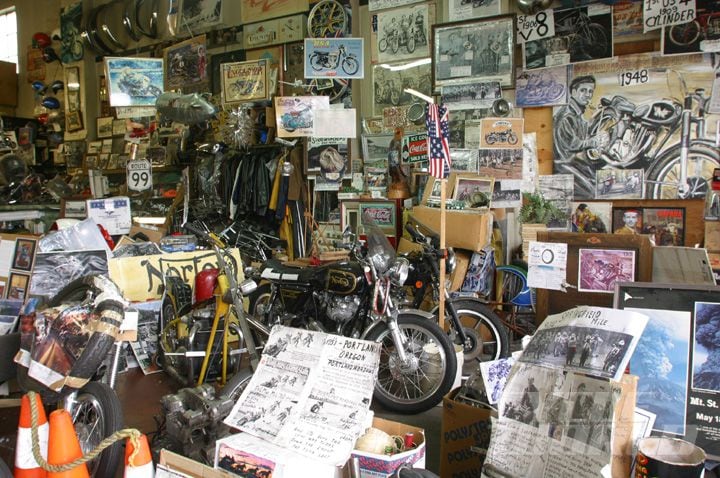Vital Motorcycle Parts NZ for Peak Performance and Safety
Vital Motorcycle Parts NZ for Peak Performance and Safety
Blog Article
Understanding Motorbike Gears: Just How to Enhance Your Riding Experience
In the realm of motorcycling, mastering the art of equipment adjustment is crucial for enhancing your riding performance. Appropriately understanding and utilizing bike equipments can substantially impact control, acceleration, and fuel efficiency, transforming an ordinary trip into a seamless, electrifying journey.
Comprehending Gear Mechanics
At the core of motorbike dynamics, gear mechanics play a critical duty in converting engine power right into activity, ultimately dictating speed and control. The gear ratios, meticulously made, identify the connection between engine revolutions and wheel turns, impacting velocity and gas effectiveness.
Understanding equipment technicians begins with recognizing the importance of the gearbox, which houses several gears of varying sizes. These gears connect with a procedure understood as meshing, where teeth of different equipments engage to transmit power. The precision of this communication is essential; any type of imbalance or damages can lead to inefficient power transfer, hindering efficiency. Additionally, the setup and size of equipments affect the motorcycle's ability to deal with various loads and speeds.
Additionally, the idea of gear shifting is essential to making best use of efficiency. Prompt and smooth shifts make certain that the engine runs within its optimal power band, protecting against unnecessary strain and boosting long life (motorcycle parts nz). By comprehending these mechanical details, cyclists can accomplish an unified blend of power, effectiveness, and control, elevating their riding experience
Timing Your Changes
Change timing mastery is important for maximizing motorcycle efficiency and improving the riding experience. Effectively timed changes guarantee that the engine operates within its ideal power band, which is important for keeping control, achieving smooth acceleration, and making certain the durability of the motorcycle. Cyclists should develop an user-friendly sense of when to change gears, which involves comprehending the connection in between engine transformations per minute (RPM) and speed.
To master shift timing, pay attention to the engine's audio and feel, as these provide vital clues regarding when to transform equipments. The optimal change point normally happens when the engine approaches the top series of its power band without reaching the redline. Shifting too early can bring about an absence of power, while changing as well late might create unneeded engine pressure
In addition, road conditions and riding style impact change timing. In contrast, throughout freeway riding, less shifts at higher rates can be extra suitable.
Enhancing Gas Effectiveness
While mastering bike gears is crucial for efficiency, enhancing fuel efficiency is similarly important for both environmental and economic factors. Ideal fuel consumption not just lowers operational expenses however likewise reduces the ecological impact of riding. To attain this, one should recognize the detailed partnership in between equipment option and engine efficiency.
First of all, selecting the appropriate equipment at ideal rates can dramatically impact gas consumption. Riding in a greater gear at reduced speeds can cause engine lugging, which is detrimental to both gas economic situation and engine health. Alternatively, riding in reduced gears at high speeds causes unnecessary fuel consumption. Thus, keeping an ideal equilibrium by changing equipments in alignment with road problems and prepared for maneuvers is essential.
In addition, normal upkeep plays a crucial function in gas performance. Ensuring that the bike is well-tuned, with clean air filters and appropriately inflated tires, can decrease and improve the rules of aerodynamics fuel waste. Embracing a riding style that accepts progressive acceleration and smooth deceleration can add to better fuel economic climate.

Strategies for Smooth Transitions
Achieving smooth gear shifts is basic to boosting the riding experience and guaranteeing the durability of a motorbike's transmission system. Correct gear shifting not only adds to a seamless adventure yet also decreases damage on the mechanical components. To master the art of smooth changes, motorcyclists should focus on a few key strategies.

Second of all, clutch control plays an essential duty. Involving and disengaging the clutch efficiently requires method. The clutch bar must be released slowly, permitting a seamless transfer of power from the engine to the wheels without causing a jolt or abrupt motion.

Adapting to Roadway Conditions
Navigating diverse road conditions is a critical skill for any motorcyclist aiming to maintain control and security. Whether you're riding on damp surfaces, gravel roadways, or navigating doglegs, your ability to adapt your equipment use and riding technique is paramount. Understanding just how to adjust your equipments appropriately can considerably influence traction and security, ensuring a much safer journey.
On damp roadways, it is a good idea to keep greater equipments to reduce torque and reduce wheel spin. This strategy assists keep hold on unsafe surface areas, permitting for smoother acceleration and deceleration. In contrast, when riding on gravel or unequal terrain, reduced equipments are better. Reduced gears give much better control and allow you to react more quickly to unexpected modifications in the road surface area.
Sharp curves demand accurate gear monitoring to stabilize speed and control. Downshifting prior to entering a curve can help maintain energy while making certain the motorbike stays secure throughout the turn. Constant practice in different problems enhances your capacity to respond and forecast to modifications in road appearance and slope.
Conclusion
Grasping bike equipments dramatically boosts the riding experience by enhancing velocity, fuel, and control performance. Adjusting gear option to various road problems, such as using higher gears on damp surface areas and lower equipments on crushed rock, further boosts handling and safety and security.
Understanding equipment mechanics starts with acknowledging the relevance of the transmission, which houses several equipments of differing sizes. These gears connect with a procedure recognized as meshing, where teeth of various gears engage to transfer power click over here (mx gear nz). Mild changes to the throttle during equipment shifts can stop jerky activities and preserve a consistent riding speed
Whether you're riding on damp surface areas, gravel roadways, or browsing sharp turns, your capacity to adjust your equipment usage and riding strategy is paramount. Adjusting equipment option to numerous roadway conditions, such as making use of greater equipments on wet surfaces and lower equipments on crushed rock, additional improves handling and security.
Report this page